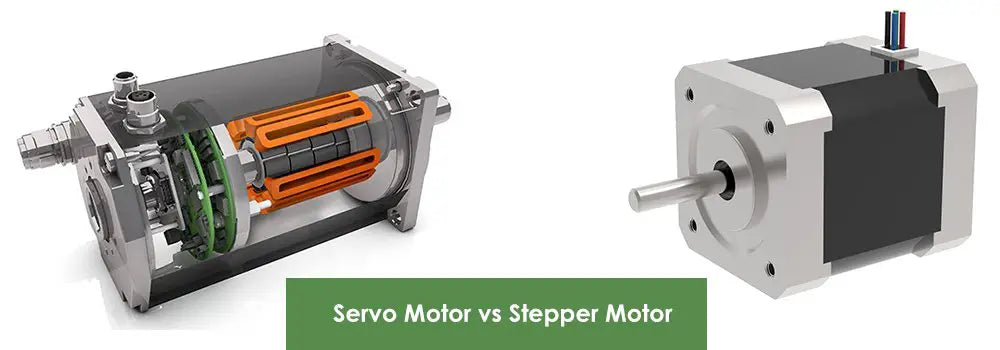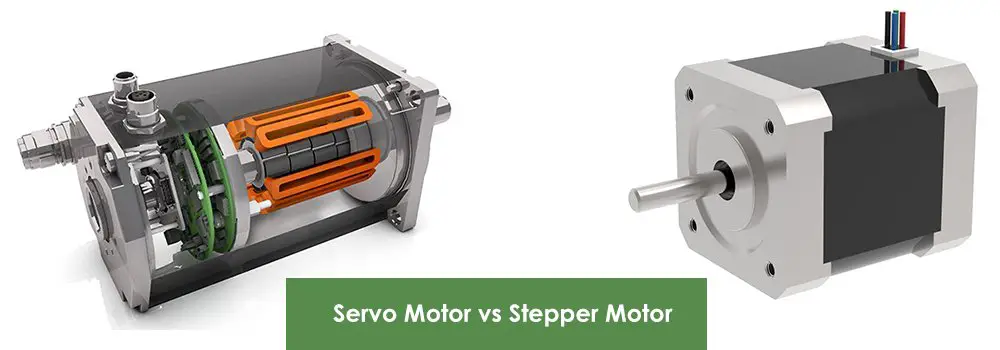stepper motor

Stepper motor working principle
A stepper motor, a type of motor designed specifically for control, converts electrical pulses into angular displacement.
When the stepper driver receives a pulse signal, it causes the stepper motor to rotate at a predetermined fixed angle, known as the “step angle,” in the specified direction.
The motor rotates step by step at the fixed step angle.
Precise positioning can be achieved by controlling the number of pulses, and regulation of the speed and acceleration of motor rotation can be achieved by controlling the pulse frequency.
Reversing the direction of rotation of the motor can be achieved by changing the sequence in which the windings are energized.

The working principle of stepper motor driver
A stepper motor requires a specialized stepper motor driver to function. This driver consists of a boost control unit, a power drive unit and a protection unit.
The power drive unit amplifies the pulses generated by the boost control unit and is directly connected to the stepper motor, serving as the power interface between the stepper motor and the microcontroller.

The control instruction unit receives pulse and direction signals and generates a set of corresponding pulses, which are then transmitted to the stepper motor through the power drive unit.
The stepper motor then rotates a set step angle in the indicated direction.
Stepper motor has several important technical specifications such as maximum static torque, starting frequency and operating frequency.
Generally, the smaller the pitch angle, the greater the maximum static torque and the higher the starting and operating frequencies.
Therefore, the operating mode places strong emphasis on subdivision drive technology.
This method improves the torque and resolution of the stepper motor and completely eliminates low-frequency oscillation.
As a result, the performance of the subdivision unit is superior to other types of units.
The rotor inside a servo motor is a permanent magnet. The driver controls three-phase U/V/W electricity to create an electromagnetic field, causing the rotor to rotate under the influence of this magnetic field. The motor encoder itself provides feedback signals to the driver, which adjusts the rotor rotation angle based on the feedback value and the target value.
servo motor

The working principle of servo motor
Servo motor, also known as executive motor, is used as an actuator in automatic control systems to convert received electrical signals into angular displacement or angular velocity on the motor shaft.
Servo motors come in two varieties: DC and AC.
When a servo motor receives a pulse, it rotates the corresponding angle to produce displacement. This occurs because the servo motor itself emits pulses, with each angle of rotation emitting a corresponding number of pulses that form a closed circuit with the pulses received by the servo motor.
This allows the system to monitor the number of pulses it sends to the servo motor and the number of pulses it receives, allowing for precise control and positioning.
In terms of performance, AC servo motors are superior to DC servo motors. AC servo motors use sine wave control, resulting in low torque ripple and high capacity.
DC servo motors, on the other hand, use trapezoidal wave control and have relatively low performance.
However, brushless servo motors in DC servo motors perform better than brush servo motors.
The working principle of servo motor driver
The inside of a servo motor contains a permanent magnet rotor.
The actuator controls three-phase U/V/W electricity to generate an electromagnetic field, causing the rotor to rotate.
Additionally, the motor encoder provides feedback signals to the driver.
The driver adjusts the rotor rotation angle based on the feedback value and the desired target value.
Brush DC servo motor drive:
The working principle of the motor is similar to that of a standard DC motor.
The actuator has a three-circuit structure, consisting of a current circuit, a speed circuit, and a position circuit, arranged in order from inside to outside.
The current circuit output controls the motor armature voltage.
The input of the current loop is the PID output of the speed loop, the input of the speed loop is the PID output of the position loop, and the input of the position loop is the specified input.
The control diagram is illustrated above.
Brushless DC servo motor drive:
The power supply is DC, which is transformed into AC U/V/W power by an internal three-phase inverter.
The driver also employs a three-loop control structure (current loop, speed loop, position loop) and its drive control principle is the same as previously described.
AC servo motor drive:
The system can be divided into two distinct modules: the power panel and the control panel, each with different functions.
The control panel outputs PWM signals through a corresponding algorithm, serving as the drive circuit for the drive signal, to modify the output power of the inverter and achieve control of the three-phase permanent magnet synchronous AC servo motor.
The power drive unit first converts the incoming three-phase electricity or municipal electricity into direct current electricity through a three-phase full-bridge rectifier circuit.
The three-phase permanent magnet synchronous AC servo motor is then driven by the commutator of a three-phase PWM sinusoidal voltage type inverter, after rectification of the three-phase or municipal electricity.
This process is simply an AC-DC-AC conversion.
The control unit is the core of the entire AC servo system and performs system position control, speed control, torque control and current control.
Performance Comparison of Servo Motor and Stepper Motor
Control accuracy
The more phases and beats a stepper motor has, the greater its accuracy.
The servo motor gets feedback from its own encoder, and the more scales the encoder has, the greater its accuracy.
Low frequency characteristic
Stepper motors are prone to low-frequency vibrations at low speeds.
To combat this, low-speed operation often employs damping or subdivision technology.
In contrast, servo motors run smoothly without vibration, even at low speeds.
Torque frequency characteristic
The output torque of a stepper motor decreases with increasing speed and drops significantly at high speeds.
In contrast, a servo motor provides constant torque output at its rated speed and constant power output at its rated speed.

Overload capacity
A stepper motor has no overload capacity, while a servo motor has strong overload capacity.
Operational Performance
Stepper motors operate under open-loop control, making them susceptible to losing pitch or stopping rotation if the starting frequency is too high or the load is too heavy. If the speed is too high, it can also result in overtaking.
On the other hand, the AC servo drive system uses closed-loop control. The servo motor driver samples the feedback signal from the motor encoder directly, forming internal position and speed control loops. As a result, stepper motors are less likely to lose step or overshoot, making control performance more reliable.
Fast response performance
Stepper motors take hundreds of milliseconds to accelerate from a static state to operating speed.
In comparison, AC servo systems have excellent acceleration performance, typically taking just a few milliseconds, making them suitable for applications that require quick starts and stops.


























































